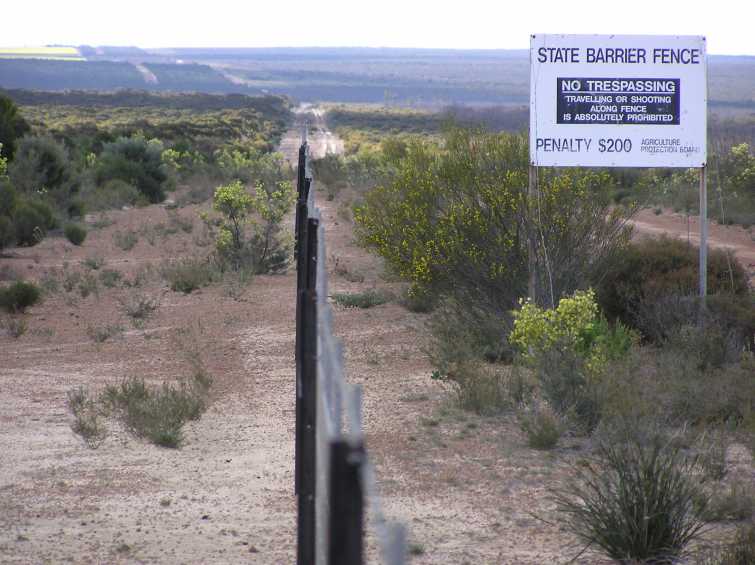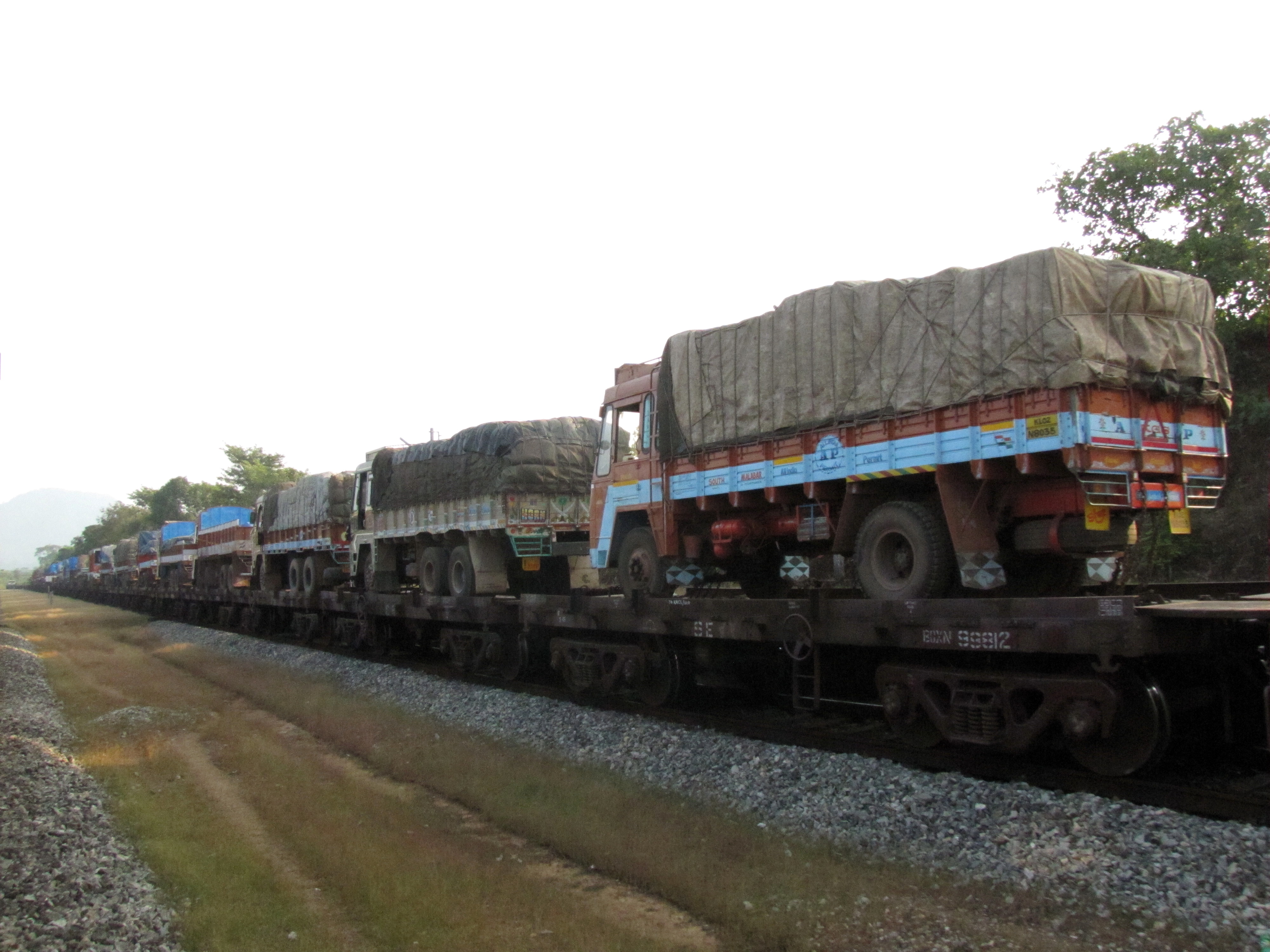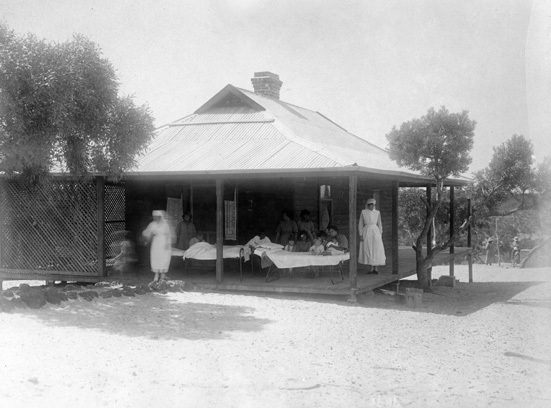|
Molly Craig
Molly Kelly (née Craig, died January 2004) was an Australian Martu Aboriginal woman, known for her escape from the Moore River Native Settlement in 1931 and subsequent trek home with her half-sister Daisy Kadibil (née Burungu) and cousin Gracie Cross (née Fields). She was a member of the Stolen Generations, who were part-white, part-Aboriginal children forcibly removed from their families by the Australian government. Her story was the inspiration for the book ''Follow the Rabbit-Proof Fence'' and the film ''Rabbit-Proof Fence''. Early life Molly Craig was born in Jigalong, Western Australia, circa 1916/1917. Her mother, Maude, was a Martu Aboriginal woman, and her father was Thomas Craig, a white Australian fence inspector. The Martu people (Mardudjara) had moved from the nearby Sandy Desert. Jigalong was established in the far north west of Australia in 1907, as the location for a maintenance and rations store for workmen constructing the rabbit-proof fence. The rabbit-pr ... [...More Info...] [...Related Items...] OR: [Wikipedia] [Google] [Baidu] |
Jigalong
Jigalong is a remote Aboriginal community of approximately 333 people located in the Pilbara region of Western Australia. Location Jigalong is in the Pilbara region of Western Australia, approximately east of the town of Newman in the Shire of East Pilbara local government area. The community is located in an Aboriginal Lands Trust reserve on the western edge of the Little Sandy Desert.Jigalong Community Layout Plan No. 2 Planning Report & Provisions Western Australian Planning Commission, September 2005. The of the land are the [...More Info...] [...Related Items...] OR: [Wikipedia] [Google] [Baidu] |
Rabbit-proof Fence
The State Barrier Fence of Western Australia, formerly known as the Rabbit-Proof Fence, the State Vermin Fence, and the Emu Fence, is a pest-exclusion fence constructed between 1901 and 1907 to keep rabbits, and other agricultural pests from the east, out of Western Australian pastoral areas. There are three fences in Western Australia: the original No. 1 Fence crosses the state from north to south, No. 2 Fence is smaller and further west, and No. 3 Fence is smaller still and runs east–west. The fences took six years to build. When completed, the rabbit-proof fence (including all three fences) stretched . The cost to build each kilometre of fence at the time was about $250 (). When it was completed in 1950, the No. 1 Fence was the longest unbroken fence in the world. History Rabbits were introduced to Australia by the First Fleet in 1788, but they became a problem after October 1859, when Thomas Austin released 24 wild rabbits from England for hunting purposes, believing ... [...More Info...] [...Related Items...] OR: [Wikipedia] [Google] [Baidu] |
Balfour Downs Station
Balfour Downs Station is a pastoral lease and cattle station located approximately northeast of Newman, east of Roy Hill and southeast of Nullagine in the Pilbara region of Western Australia. At , it is among the largest cattle stations in Australia. Description The station occupies an area of and over 25,000 Zebu cattle graze on the plains. The herd is predominantly Polled Red Brahman with 15,000 breeding females, producing 8,000 steers (males) and heifers (females) annually, most of which are exported to the Middle East and Asia. The mineral-rich grazing country includes extensive watercourse and channel country, opening onto large floodplains covered with Mitchell, Flinders, and buffel grass. The property boasts 35 new ring dams with over of water storage. The property was estimated in value of between $1520 million (Australian dollar The Australian dollar (sign: $; code: AUD) is the currency of Australia, including its external territories: Christmas Island, ... [...More Info...] [...Related Items...] OR: [Wikipedia] [Google] [Baidu] |
Phillip Noyce
Phillip Noyce (born 29 April 1950) is an Australian filmmaker. Since 1977, he has directed over 19 feature films in various genres, including historical drama (''Newsfront'', ''Rabbit-Proof Fence'', ''The Quiet American''); thrillers (''Dead Calm'', '' Sliver'', '' The Bone Collector''); and action films (''Blind Fury'', '' The Saint'', ''Salt''). He has also directed the Jack Ryan adaptations ''Patriot Games'' (1992) and ''Clear and Present Danger'' (1994) and the 2014 adaptation of Lois Lowry's ''The Giver''. He has worked with such actors as Val Kilmer, Harrison Ford, Denzel Washington, Michael Caine, Angelina Jolie, Nicole Kidman, Meryl Streep, and Rutger Hauer. He has also directed, written, and executive-produced television programmes in both Australia and North America, including '' The Cowra Breakout'', ''Vietnam'', '' Revenge'', ''Roots'', and most-recently Netflix's '' What/If.'' Noyce's work has won him several accolades, including AACTA Awards for Best Film, Best ... [...More Info...] [...Related Items...] OR: [Wikipedia] [Google] [Baidu] |
Piggyback (transportation)
Piggyback transportation refers to the transportation of goods where one transportation unit is carried on the back of something else. It is a specialised form of intermodal transportation and combined transport. Etymology ''Piggyback'' is a corruption of ''pickaback'', which is likely to be a folk etymology alteration of ''pick pack'' (1560s), which perhaps is from ''pick'', a dialectal variant of the verb ''pitch''. Examples Rail In rail transport, the practice of carrying trailers or semi-trailers in a train atop a flatcar is referred to as "piggybacking". Early drawings of the Liverpool & Manchester Railway c1830 show road coaches being piggybacked on railway flat wagons. The rail service provided for trucks which are carried on trains for part of their journey is referred to as a rolling road, or rolling highway. A related transportation method is the rail transport of semi-trailers, without road tractors, sometimes referred to as "trailer on flatcar (TOFC)". In ... [...More Info...] [...Related Items...] OR: [Wikipedia] [Google] [Baidu] |
Western Australia
Western Australia (commonly abbreviated as WA) is a state of Australia occupying the western percent of the land area of Australia excluding external territories. It is bounded by the Indian Ocean to the north and west, the Southern Ocean to the south, the Northern Territory to the north-east, and South Australia to the south-east. Western Australia is Australia's largest state, with a total land area of . It is the second-largest country subdivision in the world, surpassed only by Russia's Sakha Republic. the state has 2.76 million inhabitants percent of the national total. The vast majority (92 percent) live in the south-west corner; 79 percent of the population lives in the Perth area, leaving the remainder of the state sparsely populated. The first Europeans to visit Western Australia belonged to the Dutch Dirk Hartog expedition, who visited the Western Australian coast in 1616. The first permanent European colony of Western Australia occurred following the ... [...More Info...] [...Related Items...] OR: [Wikipedia] [Google] [Baidu] |
Rabbit
Rabbits, also known as bunnies or bunny rabbits, are small mammals in the family Leporidae (which also contains the hares) of the order Lagomorpha (which also contains the pikas). ''Oryctolagus cuniculus'' includes the European rabbit species and its descendants, the world's 305 breeds of domestic rabbit. ''Sylvilagus'' includes 13 wild rabbit species, among them the seven types of cottontail. The European rabbit, which has been introduced on every continent except Antarctica, is familiar throughout the world as a wild prey animal and as a domesticated form of livestock and pet. With its widespread effect on ecologies and cultures, the rabbit is, in many areas of the world, a part of daily life—as food, clothing, a companion, and a source of artistic inspiration. Although once considered rodents, lagomorphs like rabbits have been discovered to have diverged separately and earlier than their rodent cousins and have a number of traits rodents lack, like two extra incis ... [...More Info...] [...Related Items...] OR: [Wikipedia] [Google] [Baidu] |
Pest-exclusion Fence
280px, Xcluder pest-exclusion fence around perimeter of Maungatautari A pest-exclusion fence is a barrier that is built to exclude certain types of animal pests from an enclosure. This may be to protect plants in horticulture, preserve grassland for grazing animals, separate species carrying diseases (vector species) from livestock, prevent troublesome species entering roadways, or to protect endemic species in nature reserves. These fences are not necessarily traditional wire barriers, but may also include barriers of sound, or smell. Design techniques Animals can be excluded by a fence's height, depth under the ground and mesh size. It is also important to choose a construction material that cannot be climbed; furthermore, sometimes it is necessary to create a subsurface fencing element to prevent burrowing under the fence. [...More Info...] [...Related Items...] OR: [Wikipedia] [Google] [Baidu] |
Follow The Rabbit-Proof Fence
''Follow the Rabbit-Proof Fence'' is an Australian book by Doris Pilkington, published in 1996. Based on a true story, the book is a personal account of an Indigenous Australian family's experiences as members of the Stolen Generation—the forced removal of mixed-race children from their families during the early 20th century. It tells the story of three young Aboriginal girls: Molly (the author's mother), Daisy (Molly's half-sister), and Gracie (their cousin), who are forcibly removed from their families at Jigalong and taken to Moore River, but escape from the government settlement in 1931 and then trek over home by following the rabbit-proof fence, a massive pest-exclusion fence that crossed Western Australia from north to south. The book was adapted into a film, ''Rabbit-Proof Fence'', in 2002. Doris Pilkington Doris Pilkington had spent much of her early life, from the age of four, at the Moore River Native Settlement in Western Australia, the same facility the book ... [...More Info...] [...Related Items...] OR: [Wikipedia] [Google] [Baidu] |
Stolen Generation
The Stolen Generations (also known as Stolen Children) were the children of Australian Aboriginal and Torres Strait Islander descent who were removed from their families by the Australian federal and state government agencies and church missions, under acts of their respective parliaments. The removals of those referred to as "half-caste" children were conducted in the period between approximately 1905 and 1967, although in some places mixed-race children were still being taken into the 1970s. Official government estimates are that in certain regions between one in ten and one in three Indigenous Australian children were forcibly taken from their families and communities between 1910 and 1970. Emergence of the child removal policy Numerous 19th and early 20th-century contemporaneous documents indicate that the policy of removing mixed-race Aboriginal children from their mothers related to an assumption that the Aboriginal peoples were dying off. Given their catastrophic popu ... [...More Info...] [...Related Items...] OR: [Wikipedia] [Google] [Baidu] |
Stolen Generations
The Stolen Generations (also known as Stolen Children) were the children of Australian Aboriginal and Torres Strait Islander descent who were removed from their families by the Australian federal and state government agencies and church missions, under acts of their respective parliaments. The removals of those referred to as "half-caste" children were conducted in the period between approximately 1905 and 1967, although in some places mixed-race children were still being taken into the 1970s. Official government estimates are that in certain regions between one in ten and one in three Indigenous Australian children were forcibly taken from their families and communities between 1910 and 1970. Emergence of the child removal policy Numerous 19th and early 20th-century contemporaneous documents indicate that the policy of removing mixed-race Aboriginal children from their mothers related to an assumption that the Aboriginal peoples were dying off. Given their catastrophic popu ... [...More Info...] [...Related Items...] OR: [Wikipedia] [Google] [Baidu] |
Moore River Native Settlement
The Moore River Native Settlement was the name of the now defunct Aboriginal Australians, Aboriginal settlement and internment camp located north of Perth and west of Mogumber, Western Australia, Mogumber in Western Australia, near the Source (river or stream), headwaters of the Moore River (Western Australia), Moore River. History The settlement was opened by the Government of Western Australia in 1918. It was originally intended to be a small, self-supporting farming settlement for 200 Aboriginal people, with schooling and health facilities available for the children and employment opportunities for the adults. The settlement was supposed to accommodate Aboriginal people mainly drawn from the Murchison, Midlands and south-west regions of Western Australia. The ambition to turn the settlement into a farming community failed because the land was unsuitable for cultivation. During the 1920s its purpose shifted; residents were usually brought there against their will as the c ... [...More Info...] [...Related Items...] OR: [Wikipedia] [Google] [Baidu] |



.jpg)



